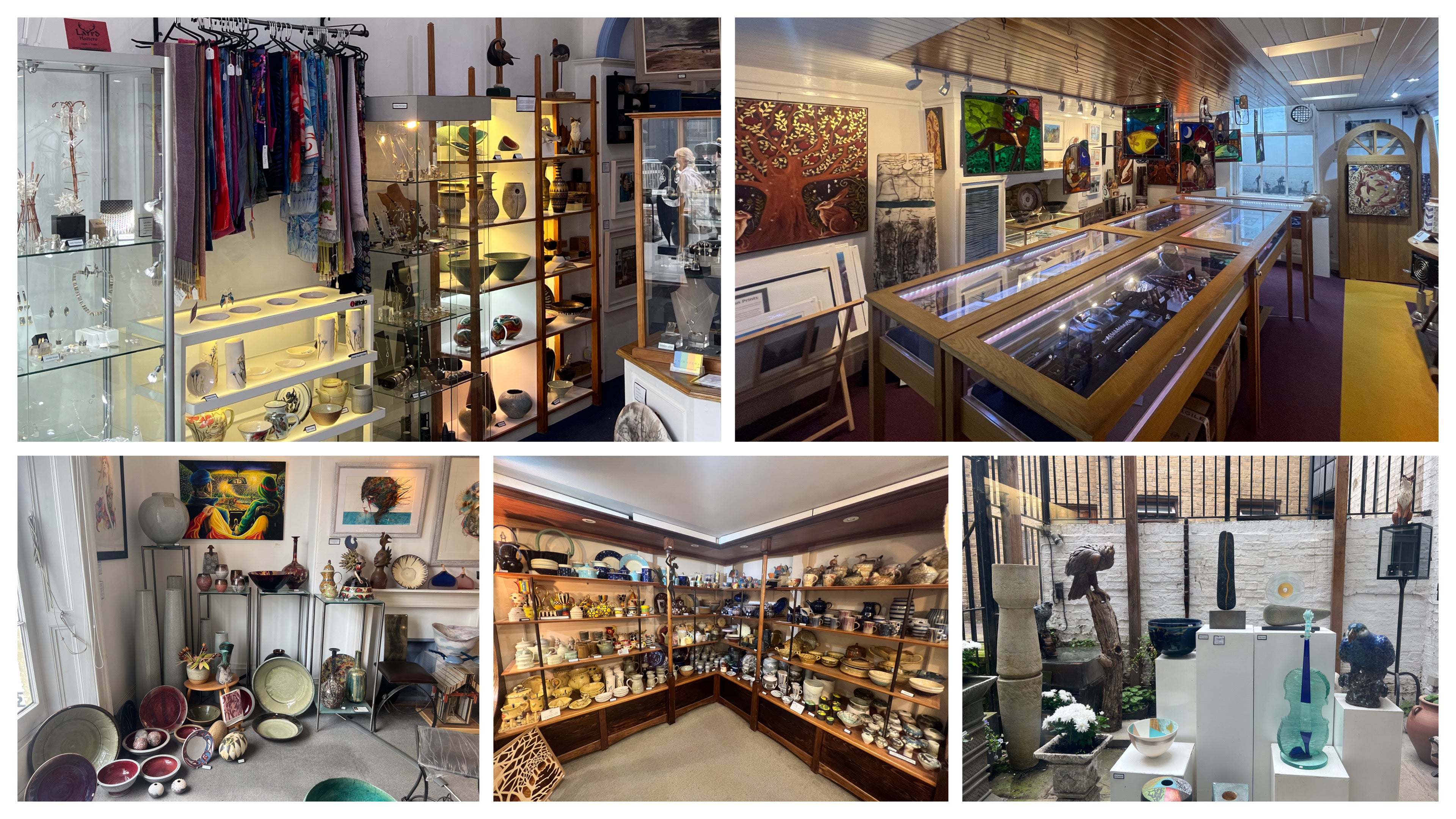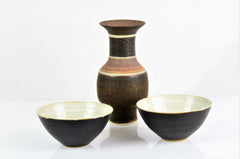
Lucie Rie
 Born in Vienna she studied at the Kunstgewerbeschule, under Michael Powolny best known for decorative figurative ceramics (1922-1926) however she was drawn to more functional ceramics based on wheel-throwing. Her earthenware pottery gained acclaim from very early on in her career and won gold medals in Paris, Milan and Brussels. In 1938, because of the political situation, she moved to England where she remained for the duration of her life, working in her small studio in a mews flat in central London. During the war years, when there was little opportunity to make pottery, she produced ceramic buttons for the Bimini Glass and Jewellery workshop.
Born in Vienna she studied at the Kunstgewerbeschule, under Michael Powolny best known for decorative figurative ceramics (1922-1926) however she was drawn to more functional ceramics based on wheel-throwing. Her earthenware pottery gained acclaim from very early on in her career and won gold medals in Paris, Milan and Brussels. In 1938, because of the political situation, she moved to England where she remained for the duration of her life, working in her small studio in a mews flat in central London. During the war years, when there was little opportunity to make pottery, she produced ceramic buttons for the Bimini Glass and Jewellery workshop.
 In 1946 Hans Coper came to work for her and for the next two decades they worked closely together to become the leading modernist potters in Britain. For a short period Lucie Rie came under the influence of Bernard Leach, who encouraged her to make stoneware and porcelain, but she never favoured his oriental tendency or the rural ideologies popular amongst other British studio potters. In the post-war years she absorbed a Scandinavian modernist aesthetic inspired also by a broad range of historical ceramics. Her work is noted for its elegant flowing forms with simple ribbed patterns or textured glazes and volcanic pitted surfaces. Her work was fired once, using an electric kiln. Her output was increasingly of one-off vessel forms such as bottles, vases and bowls using muted pale colours for the stoneware while her porcelain sometimes had startling yellows, pinks and bronze colourations.
In 1946 Hans Coper came to work for her and for the next two decades they worked closely together to become the leading modernist potters in Britain. For a short period Lucie Rie came under the influence of Bernard Leach, who encouraged her to make stoneware and porcelain, but she never favoured his oriental tendency or the rural ideologies popular amongst other British studio potters. In the post-war years she absorbed a Scandinavian modernist aesthetic inspired also by a broad range of historical ceramics. Her work is noted for its elegant flowing forms with simple ribbed patterns or textured glazes and volcanic pitted surfaces. Her work was fired once, using an electric kiln. Her output was increasingly of one-off vessel forms such as bottles, vases and bowls using muted pale colours for the stoneware while her porcelain sometimes had startling yellows, pinks and bronze colourations.
During the 1960s she taught at Camberwell School of Art and was a visiting lecturer at the Royal College of Art. Lucie Rie was awarded an OBE in 1968, CBE in 1981 and a DBE in 1991.
To browse work by Lucie Rie, visit the Online Shop.